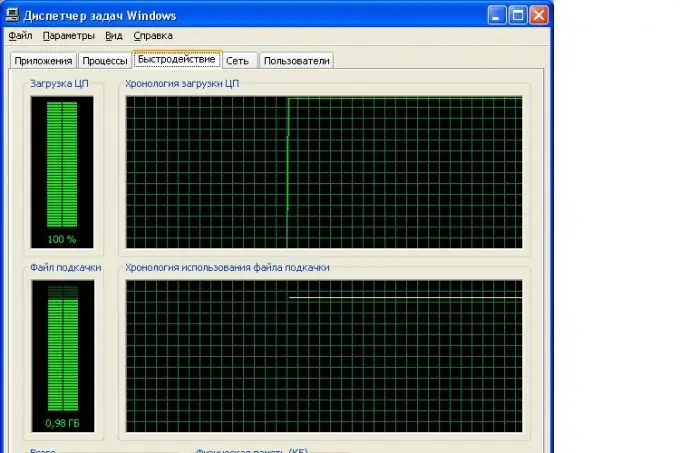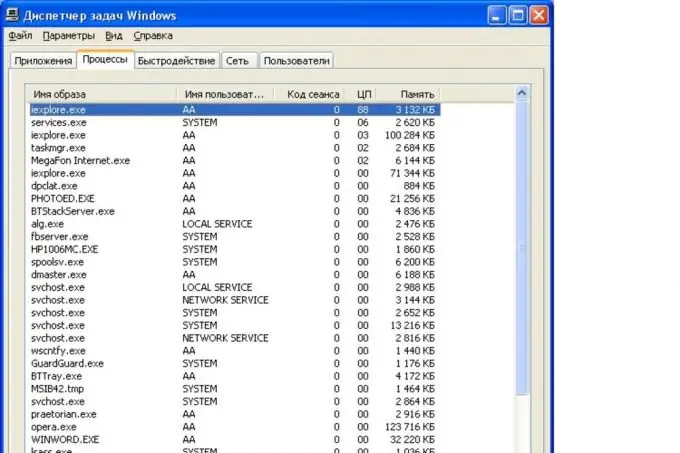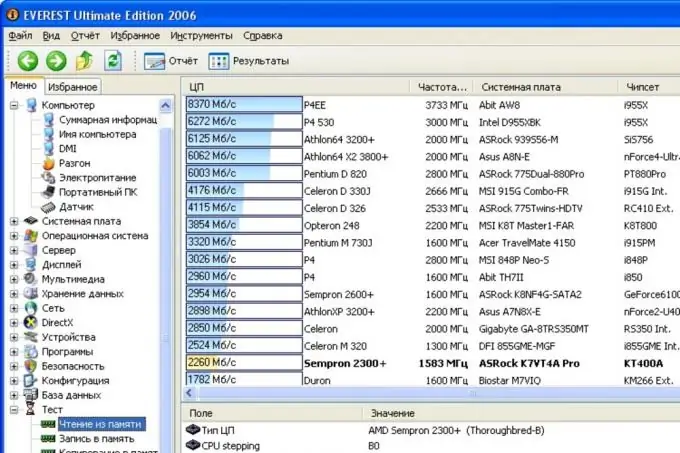The performance of your computer depends on many factors. Both the hardware used in the system and the software, as well as the level of computer workload. There are many methods and programs to test performance. The article discusses the simplest of them.

Instructions
Step 1
The easiest way to check the performance of your computer is using the tools built into the Windows operating system.
Press the key combination CTRL alt="Image" DEL.
In the window that appears, select "Task Manager"
Select the "Performance" tab.
In the window that opens, the parameters for the use of processor resources (and the paging file) are presented.
If the processor load is close to 100%, then it is recommended to go to the adjacent (on the left) "Processes" tab and find out which process is overloading the processor.
In order not to manually search for such a process, you can sort any column in ascending or descending order of the presented values, simply by clicking on the corresponding heading (in our case, "CPU").

Step 2
To get more detailed information about the speed of a computer, you will need a special "test" software. For example, the Everest program.
Install (or copy) the Everest software to your computer.
Run the program.
At the bottom of the left "tree" menu, select "Test".
In the drop-down menu, select the sub-menu item that best suits your tasks, for example, "Reading from memory".
Then click the "Refresh" button and in a few seconds you will receive detailed information about the speed of your computer.

Step 3
There are other programs for evaluating computer performance. For example, DPC Latency Checker.
Download the program from the site www.thesycon.de (The program is free and does not require installation)
Run the program.
In the window that appears, the computer's performance will be clearly displayed. If any process or program starts to "slow down" the system, a corresponding warning will appear in the test program window.






